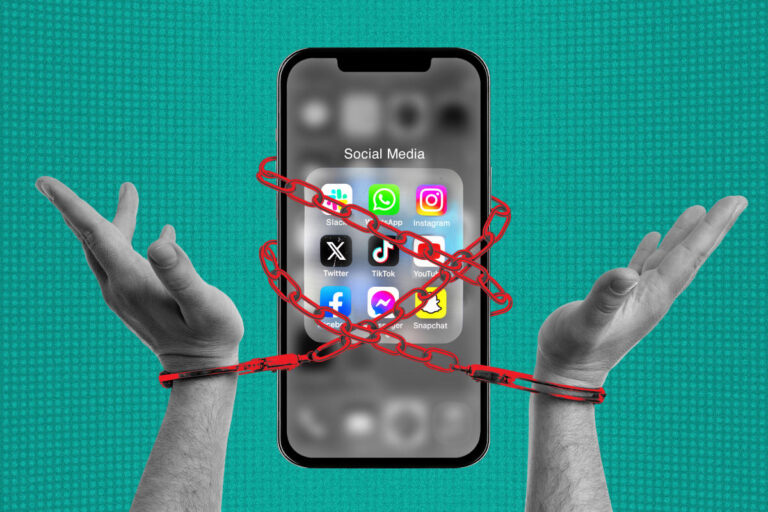Learning how to say no to someone is a skill that can significantly improve your personal and professional life.
Many people struggle with this because they fear disappointing others or damaging relationships.
However, constantly agreeing to requests can lead to stress, burnout, and a lack of time for your own priorities.
Saying no is not about being rude or dismissive; it’s about setting healthy boundaries and respecting your time and energy.
This skill allows you to maintain focus on what truly matters and ensures you don’t overcommit. Whether at work, with friends, or within your family, knowing when and how to say no is essential for personal growth and well-being.
This guide will explain how to say no to someone, why saying no is important, how to assess situations effectively without guilt or unnecessary conflict.
Understanding The Importance of Saying No

Saying no is a vital part of maintaining balance and protecting your priorities. When you agree to too many commitments, you risk spreading yourself too thin, which can harm both your mental and physical health.
Understanding how to say no to someone helps you focus on your goals and manage your time effectively.
Agreeing to everything may seem like a way to maintain harmony, but it often leads to resentment and exhaustion.
For example, if a colleague repeatedly asks for help on tasks outside your responsibilities, constantly saying yes could negatively affect your own productivity.
Learning to say no allows you to dedicate your energy to what truly matters, ensuring you can perform at your best.
By prioritizing yourself, you also set a positive example for others. Demonstrating that you respect your time encourages people to respect it too.
Saying no is not selfish; it’s a form of self-care that benefits everyone in the long run.
Assessing The Situation
Before deciding to say no, it’s essential to assess the situation carefully. This involves understanding the nature of the request and evaluating whether it aligns with your priorities and availability.
Taking a moment to reflect can help you make a thoughtful and confident decision.
Start by asking yourself a few questions: Is this request urgent or important? Does it conflict with other commitments? How will saying yes impact your current workload or personal plans?
For example, if a friend invites you to an event on a busy workday, consider whether attending is feasible or if declining is the better option.
Evaluating the requester’s intentions can also help. Are they asking because they genuinely need your help, or is it something they could handle independently? Assessing the situation ensures that your response is well-considered and appropriate.
Communicating Your Decision Clearly
When it’s time to say no, clear and confident communication is crucial. Being direct doesn’t mean being harsh; you can express your decision in a way that maintains respect and understanding.
Learning how to say no to someone effectively requires using simple and polite language.
Start by acknowledging the request. For instance, say, “I appreciate you thinking of me” or “Thank you for reaching out.”
Then, follow with your refusal: “Unfortunately, I can’t help this time.” This approach softens the impact of your no and shows that you respect the other person’s needs.
It’s also helpful to avoid overexplaining. Giving too many details can make your response seem uncertain, inviting pushback.
A concise explanation, such as “I have other commitments,” is often sufficient.
By being clear and confident, you reduce the chances of misunderstandings or hurt feelings.
Read More
How To Influence People In A Positive Way
How To Influence Others As A Leader

Managing Guilt and Pressure
One of the biggest challenges in learning how to say no to someone is overcoming feelings of guilt.
Many people feel obligated to agree to requests, fearing they might disappoint others. However, it’s important to remember that saying no is a natural and necessary part of life.
Start by reframing your perspective. Saying no doesn’t mean you’re letting someone down; it means you’re being honest about your limitations.
This honesty fosters trust and ensures you’re not overpromising. Remind yourself that your time and energy are finite resources, and it’s okay to protect them.
Dealing with pressure from persistent individuals can be challenging. In such cases, stay firm but polite.
For example, if someone insists despite your refusal, repeat your no calmly: “I understand this is important, but I’m unable to help.”
Standing your ground reinforces your boundaries and shows that you value your decisions.
Letting go of guilt allows you to say no with confidence. Recognize that prioritizing yourself is not selfish; it’s essential for your well-being.
With practice, this mindset becomes easier to adopt, enabling you to handle requests more effectively.
Setting Boundaries Effectively
Setting boundaries is one of the most important aspects of learning how to say no to someone.
Boundaries are essential for maintaining healthy relationships, ensuring you don’t feel overwhelmed, and protecting your time.
When you set clear boundaries, you communicate your limits and prioritize your well-being.
Start by identifying what your limits are. Understand your personal and professional needs, and consider what you are willing to tolerate and what you are not.
For example, if your work schedule is already full, you may need to set a boundary with colleagues who regularly ask for your help.
By setting clear limits from the beginning, others are more likely to respect your time.
When communicating your boundaries, it’s essential to be direct and consistent. Let people know when something isn’t feasible for you, and stick to your decision.
Being consistent in enforcing boundaries helps others understand that your time is valuable. Setting boundaries effectively ensures you don’t stretch yourself too thin and can maintain a balanced life.
Offering Alternatives When Appropriate
While learning how to say no to someone is necessary, it’s often helpful to offer alternatives when possible. This approach can soften the impact of your refusal and still show that you care.
Offering alternatives is especially useful in professional settings, where collaboration and maintaining good relationships are important.
For instance, if a colleague asks you to take on a task that you cannot do, consider suggesting someone else who might be available.
You could say, “I’m unable to assist with this, but I think [Name] might be a good fit.” This way, you’re still being helpful while prioritizing your own needs.
Offering alternatives can also involve recommending other ways to achieve the same goal.
For example, if a friend asks you to attend an event that you can’t make, you might suggest they meet with another mutual friend or find another time to catch up.
This approach ensures the other person feels heard and supported, even if you can’t fulfill their original request.
Practicing Assertiveness

Being assertive is key to mastering how to say no to someone. Assertiveness involves expressing your needs and opinions clearly and respectfully, without aggression or passivity.
Practicing assertiveness allows you to stand firm in your decision while maintaining positive interactions with others.
When you practice assertiveness, you’re able to say no without feeling the need to justify yourself excessively. You can express your decision in a calm and confident manner.
For example, you might say, “I’m sorry, I won’t be able to do that,” and avoid over-apologizing or over-explaining.
Assertiveness also means using body language that supports your words—maintaining eye contact, standing tall, and speaking in a calm tone.
Being assertive not only helps you say no effectively, but it also reinforces your self-respect and helps you earn the respect of others.
Over time, assertiveness becomes easier, allowing you to manage difficult situations with greater confidence.
Learning From Past Experiences
Reflecting on past situations where you struggled to say no can be an invaluable tool for improvement. Think about times when you said yes to requests that left you feeling stressed, exhausted, or resentful.
By reviewing these instances, you can identify what went wrong and how you might approach similar situations differently in the future.
For example, if you agreed to help a friend despite feeling overwhelmed, think about what could have helped you say no in that moment.
Did you feel pressured? Did you feel guilty about disappointing them? Identifying these feelings can help you understand why it’s important to prioritize yourself next time.
Also, consider the positive outcomes of situations where you successfully said no. Reflecting on these experiences can reinforce your confidence and help you recognize the benefits of setting limits.
Learning from past experiences empowers you to handle future requests with more ease and certainty.
Conclusion
Mastering how to say no to someone is an essential skill for maintaining a healthy, balanced life.
By setting boundaries, offering alternatives, practicing assertiveness, and reflecting on past experiences, you can become more comfortable with saying no when necessary.
Remember that saying no isn’t about being selfish or unkind; it’s about respecting your own needs, protecting your time, and fostering healthier relationships.
When you say no, you’re making room for the things that truly matter to you. Over time, saying no will become easier, and you’ll be able to make decisions that support your goals and well-being.
Embrace the power of no, and let it be a tool for personal growth and self-care. The more you practice, the better you’ll become at balancing your commitments and maintaining control over your time and energy.






